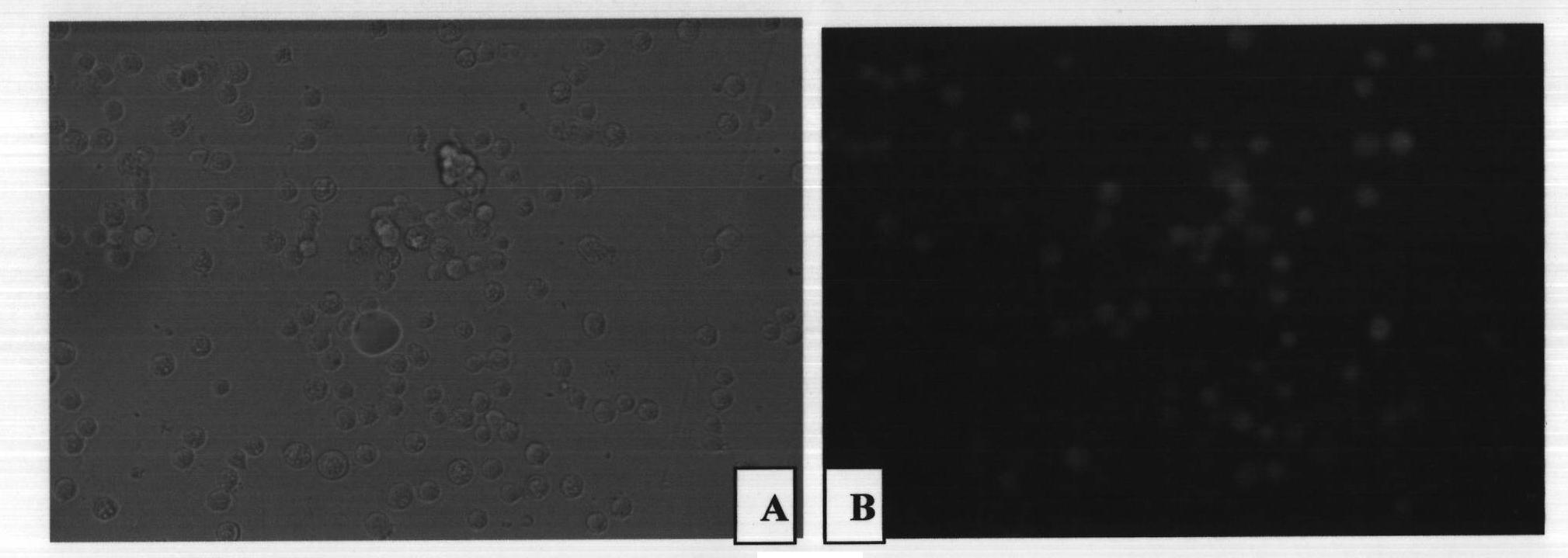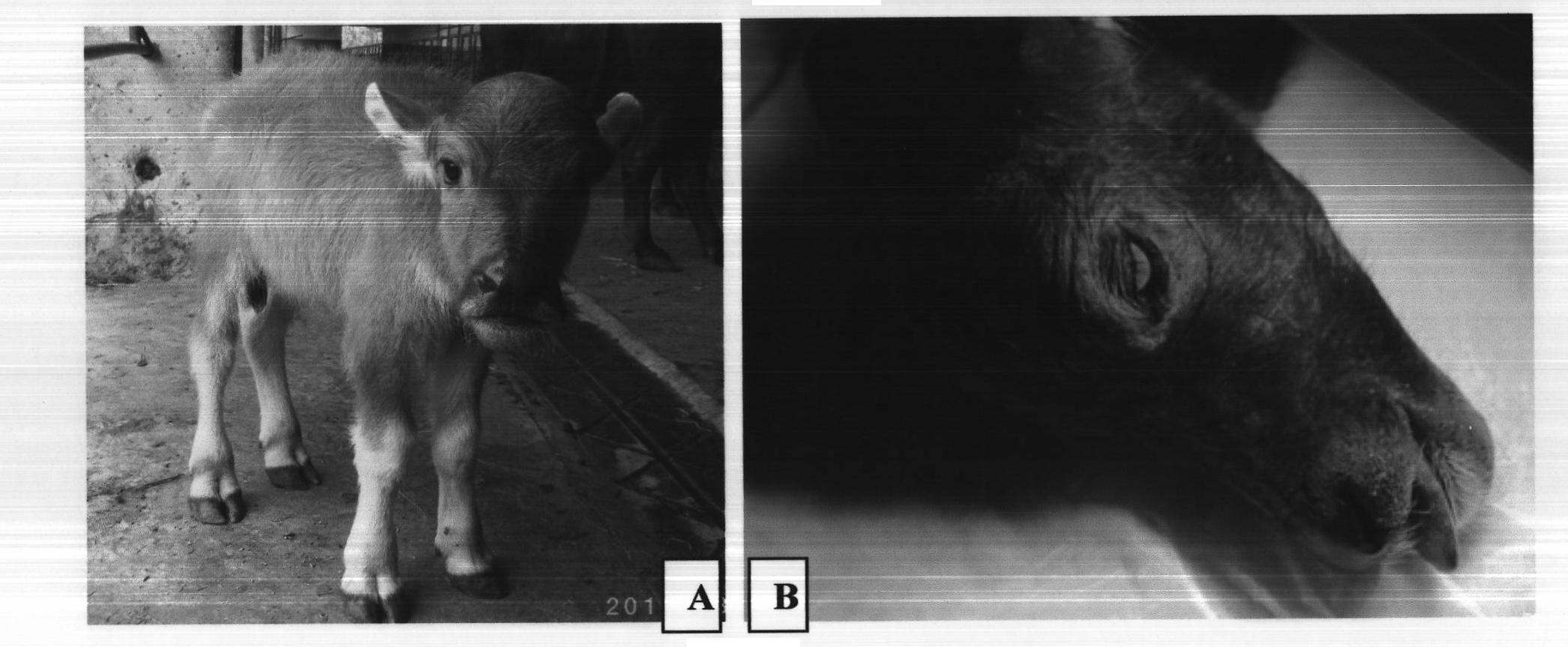Method for breeding transgenic buffalos by using somatic cell nuclear transfer technology
A somatic cell nuclear transfer and transgene technology, which is applied in the production of transgenic cloned buffaloes and in the field of animal biology, can solve the problems of restricting the development of the buffalo milk industry, low milk production and reproduction rate, etc.
- Summary
- Abstract
- Description
- Claims
- Application Information
AI Technical Summary
Problems solved by technology
Method used
Image
Examples
preparation example Construction
[0020] 2. Preparation of transgenic cloned buffalo:
[0021] Buffalo ovaries were collected from the slaughterhouse and placed in a + , Ca 2+ ,, Na + , Mg 2+ Put it in a thermos bottle of 35-37°C normal saline, send it to the laboratory within 4 hours, wash it with 37°C normal saline, cut off the suspensory ligament around the ovary, and use a 10ml syringe with a 12-gauge needle to extract Oocytes in 6 mm follicles. Under a solid microscope, the cumulus oocyte complex with uniform cytoplasm and complete compact cumulus cells was selected, washed twice with egg washing liquid, and then put into 1.5ml buffalo in vitro maturation solution (TCM-199+5% OCS+0.1μg / ml FSH) in a 30×10mm glass dish at 38.5°C, 5% CO 2 In vitro maturation in an incubator with maximum saturated humidity for 22 hours.
[0022] Select the buffalo oocytes with the first polar body, and place 10-15 oocytes in a group of 5 μg / ml cytochalasin B operating solution droplets, and cover with paraffin oil. Fin...
Embodiment
[0028] In 2010, we transplanted 72 fresh or frozen / thawed buffalo transgenic cloned blastocysts expressing the EGFP gene into the uterine horns of 36 recipient buffaloes, and each recipient cow transplanted 2 blastocysts, of which 2010 Three recipient buffaloes transplanted on January 28, February 5 and April 3 were pregnant, and after more than 300 days of full-term pregnancy, they gave birth to two bull calves on December 19, 2010. One of them survived and the other died. One bull calf was born on January 4, 2011 and March 19, 2011. Under the irradiation of ultraviolet light, the heads and limbs of these transgenic cloned buffaloes obviously expressed the EGFP marker gene. This example proves that the method of the present invention for producing transgenic cloned buffalo by somatic cell nuclear transfer technology is feasible.
PUM
 Login to View More
Login to View More Abstract
Description
Claims
Application Information
 Login to View More
Login to View More - R&D
- Intellectual Property
- Life Sciences
- Materials
- Tech Scout
- Unparalleled Data Quality
- Higher Quality Content
- 60% Fewer Hallucinations
Browse by: Latest US Patents, China's latest patents, Technical Efficacy Thesaurus, Application Domain, Technology Topic, Popular Technical Reports.
© 2025 PatSnap. All rights reserved.Legal|Privacy policy|Modern Slavery Act Transparency Statement|Sitemap|About US| Contact US: help@patsnap.com



